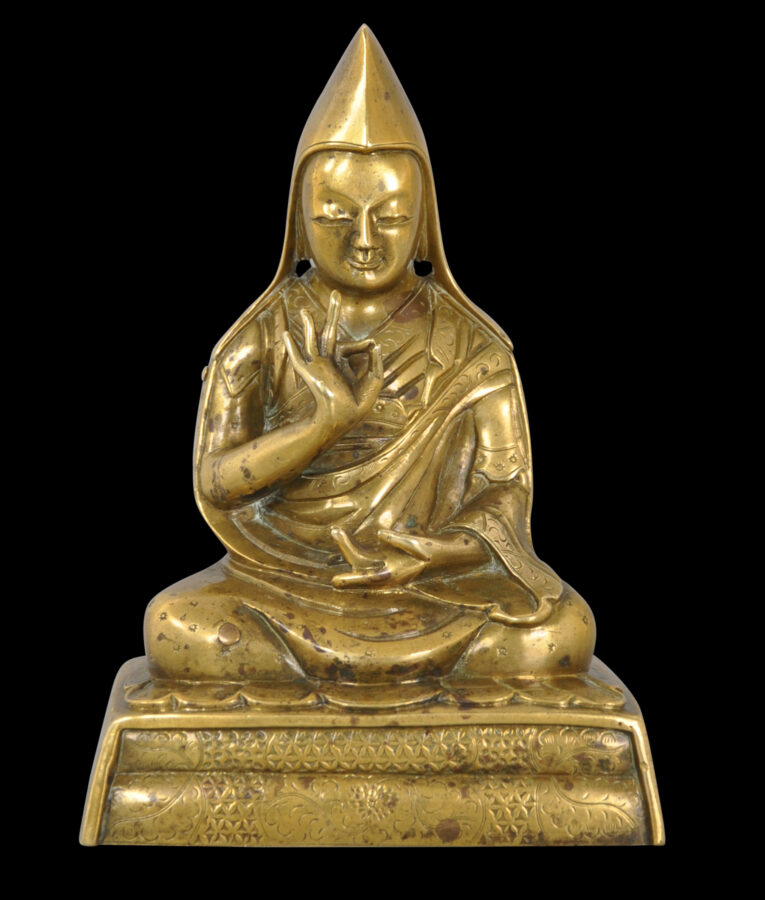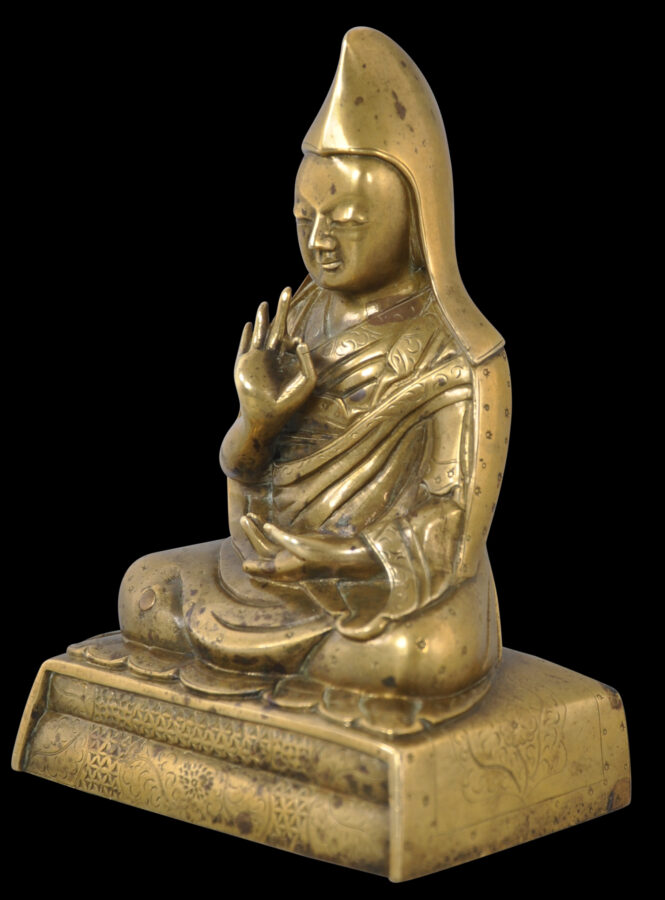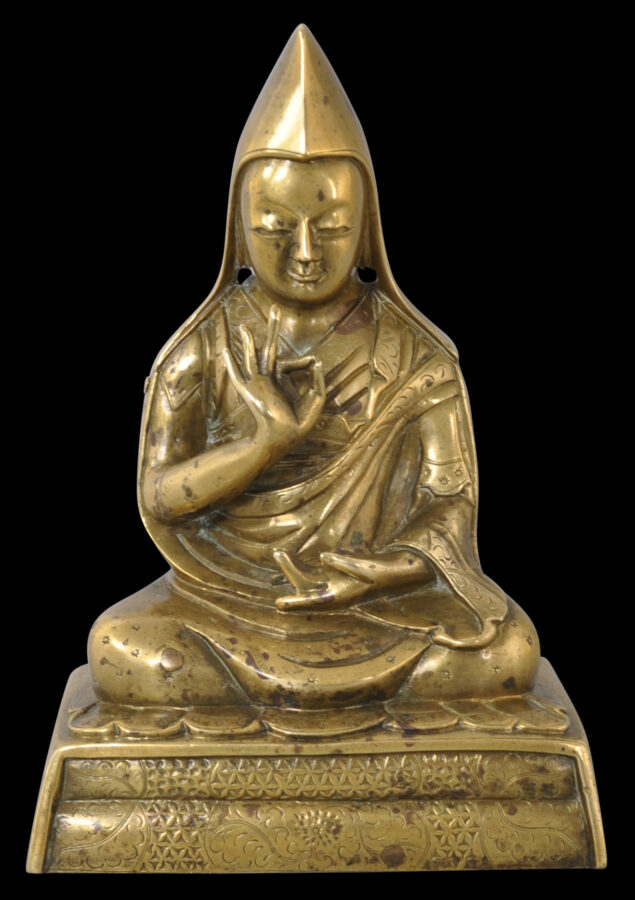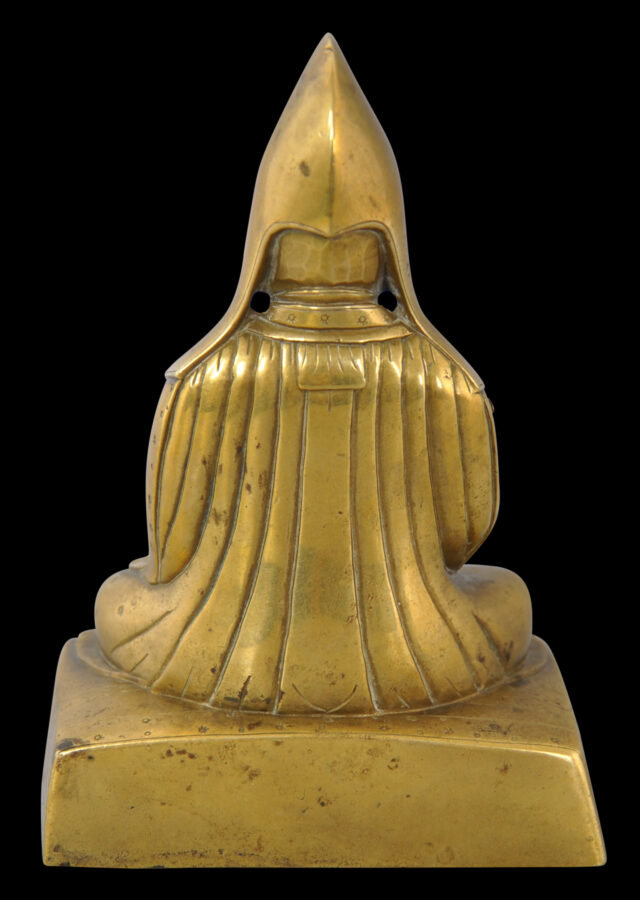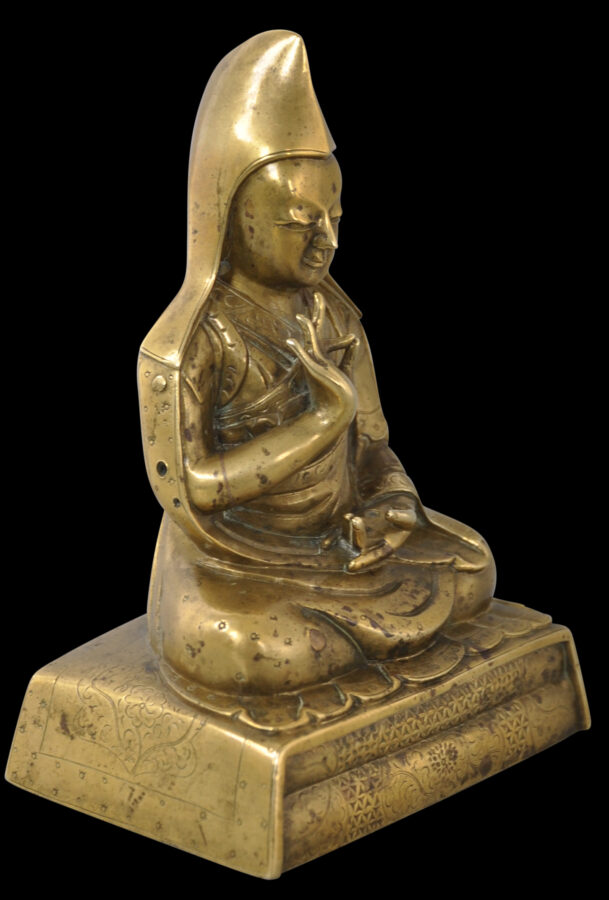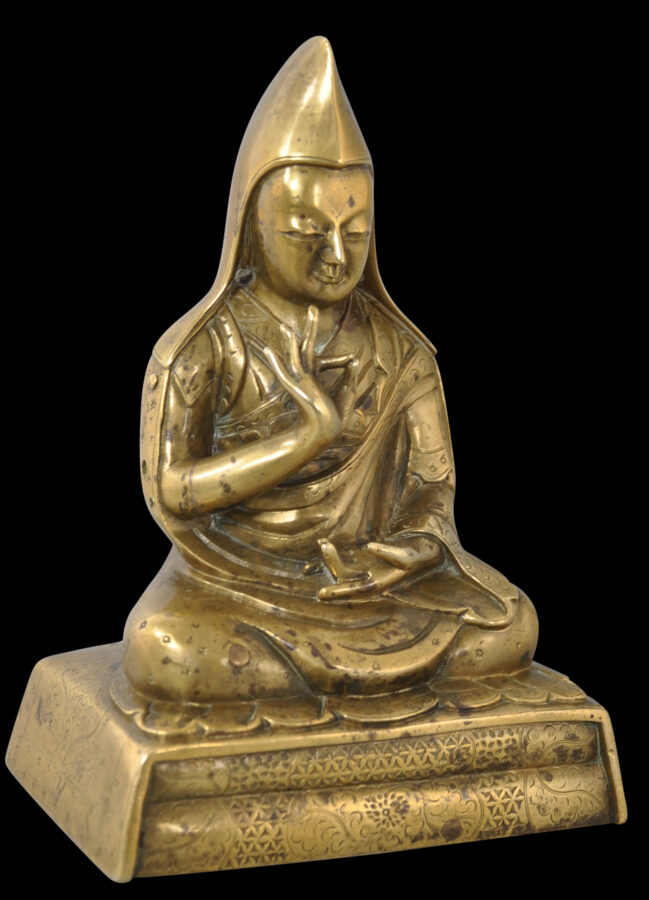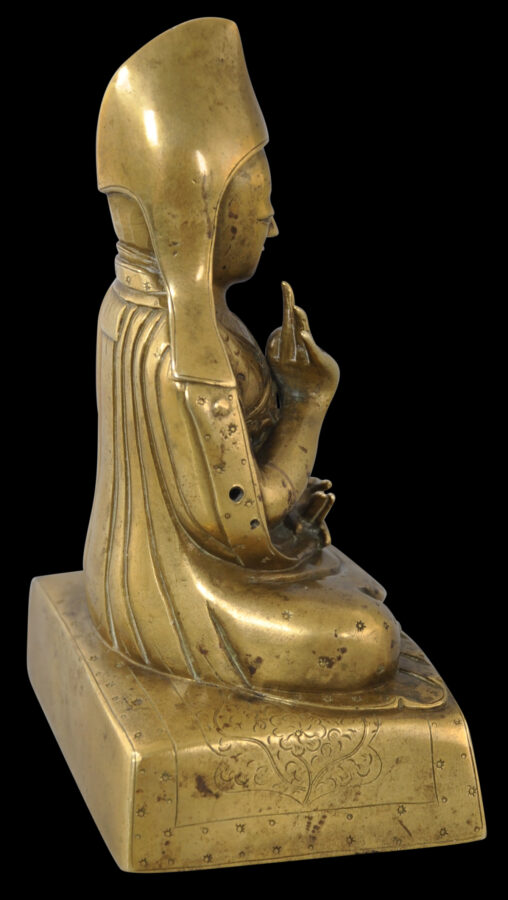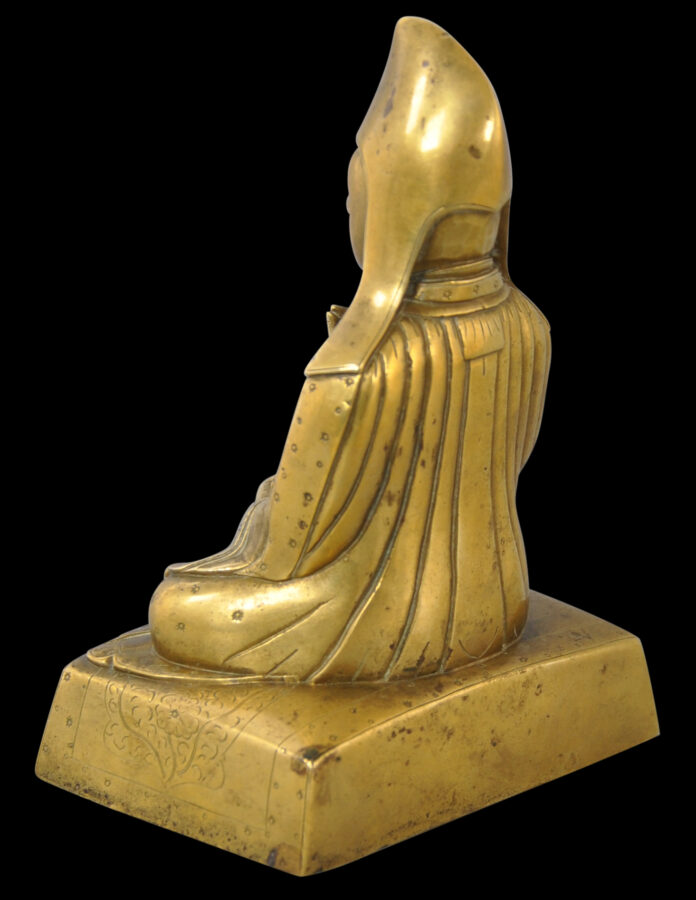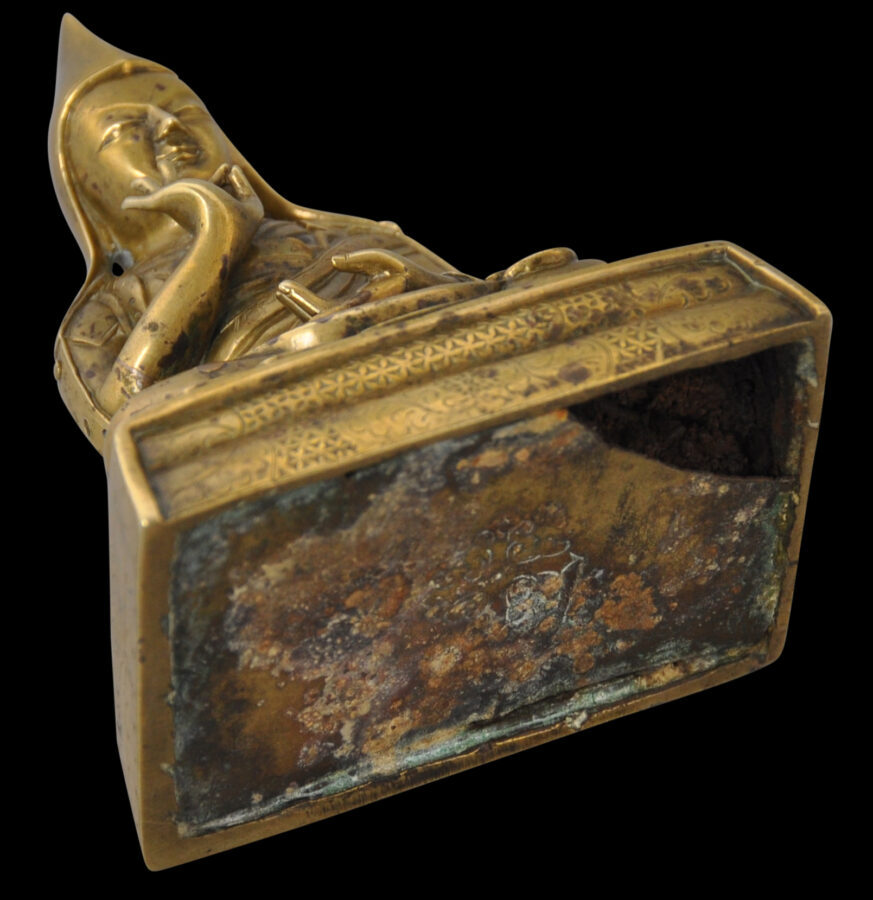This small portrait image cast in copper alloy, gilded and engraved, shows a Tibetan lama, most probably Kelsang Gyatso, the Seventh Dalai Lama (1708-1757). This tentative attribution is based on known portraits of that particular Dalai Lama. See Dinwiddie (2003, p. 314) for a very similar image and similar attribution.
The image shows the lama seated with the ends of his robes beautifully arrayed in front of him, atop a double cushion engraved with blossoms and scrollwork. The image wears a Gelug sect, peaked pandit’s hat with very long side flaps. The right hand is in the vitarkamudra gesture (the gesture of explication).
Originally, the image here probably had a lotus flower attached to the lama’s right shoulder, and a manuscript rested in the left hand which in turn rests on the lap. A similar image of the Seventh Dalai Lama illustrated in Lipton & Ragnubs (1996, p. 80) similarly does not have these attributes.
The the Seventh Dalai Lama was born in Litang, Kham. His reign was characterised by much fighting among Tibetans, Chinese and Mongolians for control of the Tibetan government. He was often moved around Tibet according to which faction gained control and where it was thought he was safest. Once stability was gained, the Dalai Lama became an important scholar and patron of the arts and huge numbers of statues and other religious artworks were commissioned. This image can be seen in this context.
The image retains its sealing plate on its underside though one corner has broken away. The plate is engraved with a flower-form double dorje motif.
Overall, this is an appealing, well modelled image.
References
Dinwiddie, D. (ed.), Portraits of the Masters: Bronze Sculptures of the Tibetan Buddhist Lineages, Serindia Publications/Oliver Hoare, 2003.
Lipton, B., & N.D. Ragnubs, Treasures of Tibetan Art: Collections of the Jacques Marchais Museum of Tibetan Art, Oxford University Press, 1996.
Prats, R.N. et al, Monasterios y Lamas del Tibet, Fundacion ‘la Caixa’, Barcelona, 2000.


